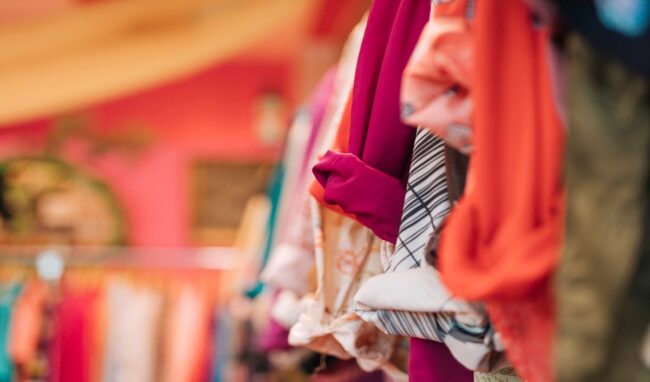Our world is drowning in things designed to be thrown away. A phone that slows down after two years. A shirt that loses its shape after ten washes. But a quiet rebellion is brewing. A movement built on a radical idea: what if one only had to buy something once?
The Rebellion Against ‘New’: A Backlash to Planned Obsolescence

For decades, consumer culture has been driven by a cycle of manufactured desire. The engine of this cycle is “planned obsolescence”-the deliberate design of products with a limited lifespan to force consumers to purchase the next new thing. It’s a business model built on dissatisfaction.
This has created a world of disposable technology and “fast fashion,” leading to overflowing landfills and a constant feeling of needing more. The “Buy It for Life” (BIFL) movement is a direct and powerful backlash to this system.
It is a philosophy that rejects the tyranny of the new in favor of the enduring value of the old. It’s a choice to seek out products that are not just made to be sold, but made to last, and to be repaired, not replaced.
What Makes a ‘Heritage Brand’? The Trinity of Material, Craft, and Warranty
What separates a true BIFL product from a well-marketed imitation? It comes down to a trinity of principles that define what is often called a “heritage brand.”
- Superior Materials: They start with the best raw materials available-thick full-grain leather, high-carbon steel, durable waxed canvas.
- Timeless Design & Craft: They focus on classic, proven construction methods over fleeting trends. Stitching is reinforced, hardware is solid brass, and the design is functional and built to endure.
- A Promise of Repair: A true heritage brand stands behind its product with a strong warranty and, crucially, a program for repairs.
These brands trade on timelessness. Their designs are often archetypal. Think of a simple cast iron skillet or a pair of rugged leather boots.
The enduring appeal of certain styles, like the iconic aviator, is a testament to this principle. A true heritage brand doesn’t just sell an object; it stands behind it for a lifetime, creating a relationship built on trust and durability.
The Psychology of Patina: Why Worn-In is the New Status Symbol

In a world obsessed with pristine, out-of-the-box perfection, the BIFL movement celebrates the beauty of imperfection. It celebrates “patina.” Patina is the gentle sheen, the subtle fading, and the unique marks of wear that a high-quality object acquires over years of use.
The scuffs on a leather wallet. The dark seasoning of a cast iron pan. The fade lines on a pair of raw denim jeans. These are no longer seen as flaws. They are a badge of honor.
Each mark tells a story. It is a physical record of the owner’s life and adventures. This has created a new kind of status symbol. It’s a quiet rebellion against the mass-produced and the generic.
Owning a beautifully aged, well-cared-for object signals a commitment to quality, patience, and sustainability. It says that one values a story more than a shine.
The BIFL Community: From Reddit Threads to Global Movement
This isn’t just a philosophy for isolated individuals; it’s a thriving global community. The heart of this movement can be found in online spaces, particularly the /BuyItForLife subreddit, a community of over a million members.
Here, people share recommendations for durable products, post pictures of their 50-year-old boots or their grandparent’s cast iron pan, and offer practical advice on how to care for and repair their cherished belongings.
This is a grassroots, knowledge-sharing ecosystem. It acts as a powerful, crowd-sourced antidote to the hype-driven world of modern marketing.
Instead of relying on a sponsored influencer, people can get an honest review from someone who has actually used a product for decades. It’s a digital campfire where the stories of durable goods are shared and celebrated.
More Than a Purchase, It’s an Investment
The objection that one can hear most often (related to BIFL philosophy) is the initial high price.
Goodyear-welted boots are four times as expensive as the ones at a fast-fashion institution. Quality cast iron pan costs much more than cheap, non-stick pan.
However, the BIFL frame has to be changed in terms of notion of cost into consideration of value over time. It is an investor.
The repairs in question mentioned that pair of boots has cost you 300 dollars but can be fixed a couple times over 20 years.
The fast-food, glued-on two will be burnt to a landfill in two. In the long-term, the good quality object is nearly always the less expensive one.
It is a kind of good financial management and an active choice of acting with wallet as voting to support more sustainable and less wasteful lifestyle.
Conclusion: Buying Less, But Buying Better

Buy It for Life is a subvert movement, and it is a subvert movement that is quiet. It is the denouncement of the disposable culture that had conquered our lives long enough. It is the back to the more mindful, purposeful and viable approach to relating to the items of our life.
It will be the choice to rate the craftsmanship higher than ease, durability above expendability. It is not the answer to all the world problems, but it is strong and intimate beginning point. It is a very simple idea. Buy less.
Choose well. See and make durable. It is not just a prudent financial move but it is revolutionary in this world where we are being constantly told to consume and this means consuming more and more, discarding that which we have purchased and buying something new.
